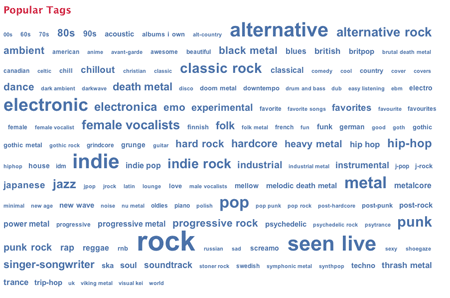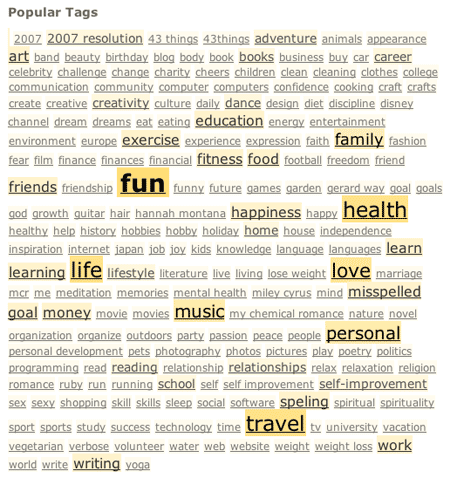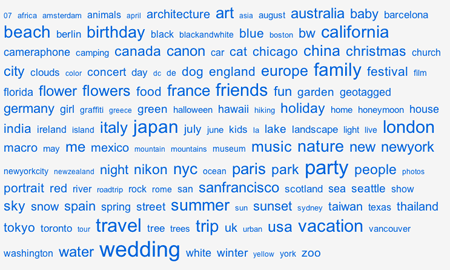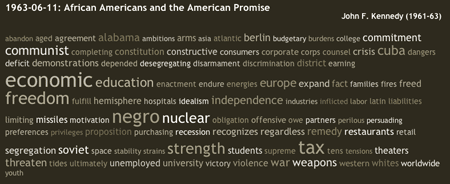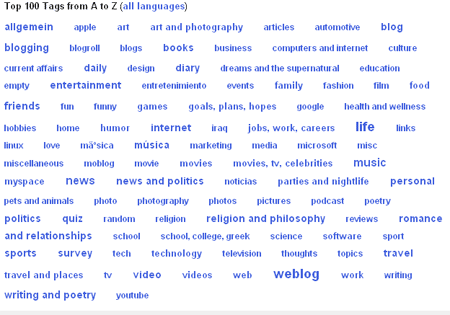The web comes closer - the magic of tag clouds
As you might have already noticed, I am a pretty big fan of tagging. I think tagging is often underestimated because it is trivial, but at the same time intuitive and meaningful.
A tag cloud (or weighted list in visual design) is a visual depiction of content tags (keywords) used on a website. Often, more frequently used tags are depicted in a larger font or otherwise emphasized, while the displayed order is generally alphabetical. Thus both finding a tag by alphabet and by popularity is possible. Selecting a single tag within a tag cloud will generally lead to a collection of items that are associated with that tag. (Wikipedia)
Last week, during the web2fordev conference, I presented some web2.0 tools on the webtaster day, and interestingly, tagging triggered greater discussions. Tag clouds show the power of tagging because they summarize the popular topics of a network, show the interest of a person or represent the demand of a community. They bring transparency, simplicity and relevance.
- **Transparency **of what a community drives and the community's topics. It turns classical taxonomy (e.g. a website menu) upside down, so we do not have to rely on "smart" hierarchical structure.
- **Simplicity **in what the sea of information is about. It offers us meta-information about all kinds of content available, and it is easy to tag.
- **Relevance **of what is the meaning of one keyword to another (e.g. social bookmarking). It involves people, who link and connect information, which other no sophisticated search robot can do so far.
Lastly, it offers us the possibility to map the web ourselves and rely a bit less on search engine robots. It is more realistic than all the semantic web buzz. The following tag clouds represent different communities and their interests. In this regard, this tag clouds are magic because they are a respective representation of networks in their topics.
Afrigator blog aggregator offers an overview of how tags have evolved over time.
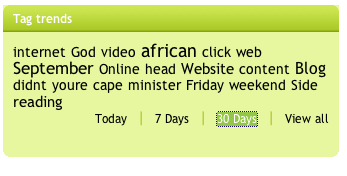
This tag cloud represents the last.fm website, with different tastes of music.
43 things is a social network website.
This tag cloud represents the popular tags of photos from a flickr user.
Tag clouds are also possible with texts such as this John F. Kennedy speech.
This tag cloud represents qype city guide highlighting the user's interest.
A tag cloud representing the major topics of millions of blogs from Technorati.
Tagging, represented in tag clouds, can easily lead to generalization, but as delicious shows, it can also be represent in an individual perspective. In delicious you can browse through tags in all directions because hierarchical order is absent. But tag clouds can also be quite frightening since they can say a lot about person. Unfortunately, tagging has not evolved very much throughout the last years as Thomas Vanderwal point out in his blog post.
While there are examples that tagging services have moved forward, there is so much more room to advance and improve. As people's own collection of tagged pages and objects have grown the tools are needed to better refind them.
David Weinberger has a nice description for tagging in his book "Everything is Miscellaneous":
We are building this connected miscellany link by link and tag by tag. Its value is in the implicit relationship that turns it into an infrastructure of meaning.
